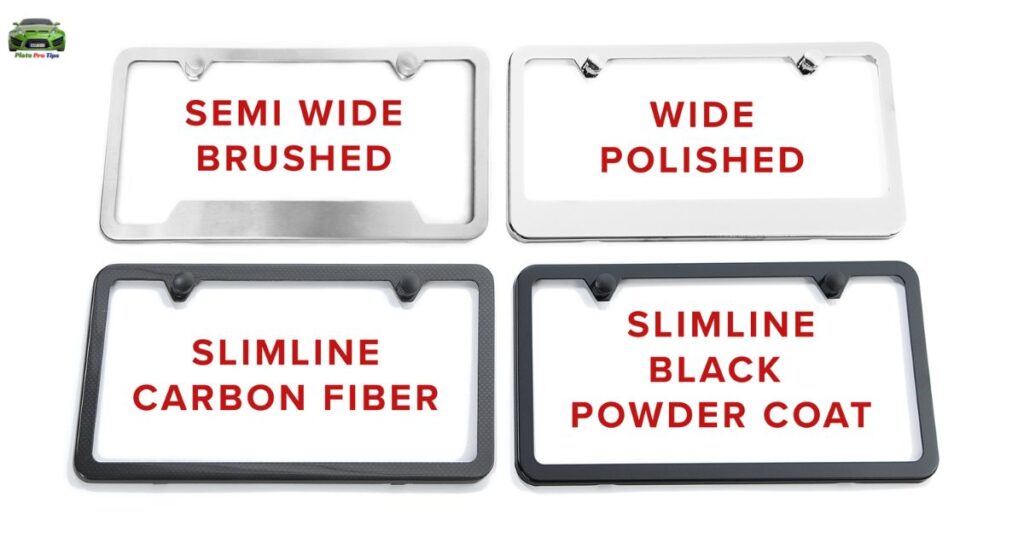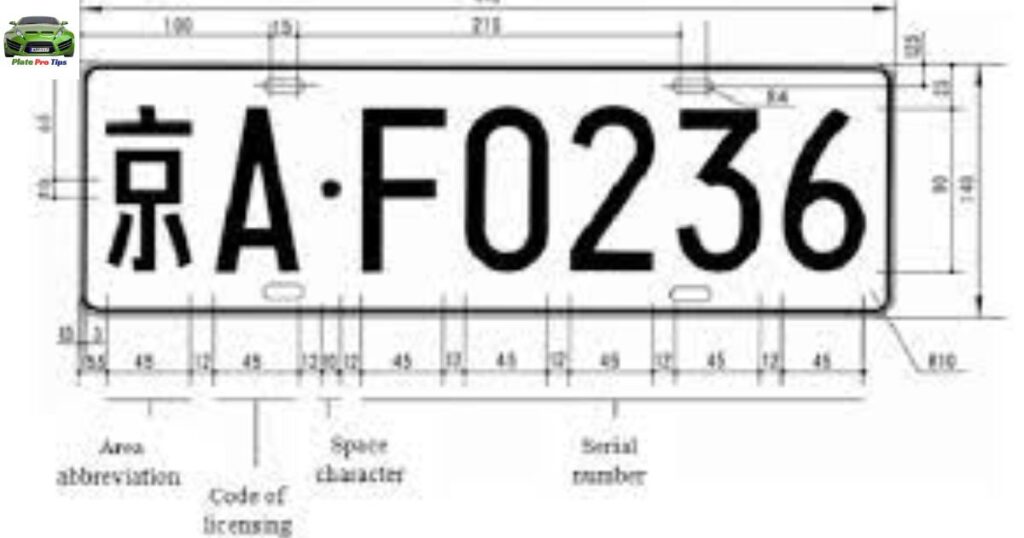License plate covers are transparent or tinted shields installed over license plates. In some states, using these covers is illegal. This is because they can obscure plate numbers or affect visibility, impeding law enforcement efforts. States with laws against license plate covers aim to ensure clear identification for safety and security purposes.
Curious about whether your license plate cover is legal? Wonder no more! Discover which states deem license plate covers illegal and ensure you’re driving within the law. Click now to stay informed and avoid potential fines or penalties.
States where license plate covers are illegal have laws prohibiting their use due to concerns about obstruction of plate visibility and law enforcement efforts.
Crucial Insights into License Plate Laws

Understanding license plate laws is essential for all drivers to ensure compliance and avoid legal consequences. These laws dictate various aspects of license plate display, including the use of covers and frames. Clear guidelines help maintain visibility for law enforcement and automated systems, aiding in the identification of vehicles for safety and security purposes.
Navigating license plate laws involves considering the intricacies of state-specific regulations and understanding the rationale behind them. Factors such as plate visibility, obstruction, and the role of technology influence these laws. Lawmakers strive to balance individual freedoms with public safety concerns, aiming to create clear standards for all drivers to follow. When it comes to license plates, adherence to these regulations ensures compliance with the law and promotes road safety.
The Complexities of License Plate Cover Regulations

Navigating the complexities of license plate cover regulations involves understanding the intricate factors influencing their legality. These regulations vary between states and are often influenced by concerns such as plate visibility and obstruction. Factors such as the material, design, and tint of the cover can all impact its legality.
Furthermore, the complexities of license plate cover regulations extend beyond individual state laws to encompass broader issues such as law enforcement practices and technological advancements. Law enforcement agencies rely on clear identification to ensure public safety and uphold the law. License plate covers that obscure or alter plate visibility can hinder these efforts, posing challenges for effective law enforcement.
Factors Influencing Legal Status
Several factors influence the legal status of license plate covers, ranging from material composition to visibility concerns. The material of the cover itself plays a significant role, with some states banning covers made from materials that obstruct or alter plate visibility. Additionally, the design and tint of the cover can impact its legality, as covers that obscure license plate numbers or alter their appearance may be deemed illegal.
Impact on Law Enforcement Practices
The legal status of license plate covers is influenced by various factors that prioritize safety, visibility, and law enforcement efficiency. One significant factor is the material composition of the cover, as some states prohibit covers that obstruct or alter the visibility of license plate numbers. Additionally, the design and tint of the cover play a crucial role, with regulations often stipulating clear guidelines to ensure plates remain easily identifiable.
State-by-State Analysis: Where Covers are Prohibited
A state-by-state analysis reveals the varying regulations regarding the legality of license plate covers across the United States. While some states have outright bans on the use of covers due to concerns about obstruction and visibility, others may allow certain types of covers with specific restrictions. Understanding the specific laws in each state is crucial for drivers to ensure compliance and avoid potential fines or penalties.
Moreover, the state-by-state analysis underscores the need for greater consistency and standardization in license plate regulations nationwide. Discrepancies in laws between states can create confusion for drivers and law enforcement alike. Efforts towards establishing uniform guidelines for license plate covers could promote clarity and compliance while also addressing safety and law enforcement concerns.
Legal Ramifications of Illegal Cover Usage
Using illegal license plate covers can have significant legal ramifications for drivers. In many jurisdictions, the use of covers that obscure or alter license plate visibility is considered a violation of traffic laws. As a result, drivers caught with illegal covers may face fines, citations, or even license suspension. Moreover, the consequences of illegal cover usage can extend beyond financial penalties, potentially impacting insurance rates and driving records.
Furthermore, illegal cover usage can hinder law enforcement efforts and compromise public safety. Clear and unobstructed license plates are crucial for accurate identification of vehicles involved in traffic violations, accidents, or criminal activities. License plate covers that obscure plate numbers or alter their appearance can impede these identification efforts, making it more challenging for law enforcement to enforce traffic laws and investigate incidents effectively.
Ensuring Compliance: Practical Tips for Drivers
Ensuring compliance with license plate regulations is essential for all drivers, and there are several practical tips to help achieve this. First and foremost, drivers should familiarize themselves with the specific laws and regulations regarding license plate covers in their state or jurisdiction. This includes understanding any restrictions on materials, designs, or tints that may affect the legality of covers.
Furthermore, drivers should exercise caution when purchasing and installing license plate covers to ensure they comply with local regulations. It’s essential to choose covers that are transparent and do not alter the appearance or visibility of the license plate numbers. When in doubt, drivers can consult with local authorities or legal experts to confirm the legality of their covers.
Addressing Safety and Security Concerns
Addressing safety and security concerns related to license plate covers is paramount for both drivers and law enforcement agencies. Clear and unobstructed license plates are crucial for accurate vehicle identification, which is essential for public safety and effective law enforcement. Covering or altering license plates can impede this process, potentially hindering efforts to apprehend individuals involved in criminal activities or traffic violations.
Additionally, addressing security concerns involves recognizing the potential risks associated with license plate covers that obscure or alter plate visibility. Automated license plate recognition systems rely on clear identification to function accurately, and any interference caused by illegal covers can compromise the effectiveness of these systems.
Advocating for Clear Identification Standards
Advocating for clear identification standards for license plates is crucial for promoting safety and efficiency on the roads. Clear and unobstructed license plates facilitate accurate vehicle identification, aiding law enforcement agencies in various tasks, including traffic enforcement and crime prevention.
Moreover, advocating for clear identification standards underscores the importance of balancing individual vehicle customization with broader safety considerations. While drivers may seek to personalize their vehicles with license plate covers or frames, it’s essential to prioritize compliance with legal regulations to maintain clear identification.
Challenges in Standardization

Challenges in standardization of license plate regulations pose significant obstacles in achieving uniformity across jurisdictions. One major challenge is the variation in laws and regulations between states and even within regions of the same state. This lack of consistency can lead to confusion among drivers and law enforcement personnel, as they may encounter different rules when traveling between areas.
Efforts Toward Enforcement and Uniformity
Efforts toward enforcement and uniformity in license plate regulations are essential for promoting safety and clarity on the roads. Law enforcement agencies play a crucial role in ensuring compliance with license plate laws by enforcing regulations and addressing violations.
Understanding License Plate Cover Regulations
Understanding license plate cover regulations is crucial for drivers to ensure compliance with the law and avoid potential legal consequences. These regulations dictate various aspects of license plate display, including the use of covers and frames. Clear guidelines help maintain visibility for law enforcement and automated systems, aiding in the identification of vehicles for safety and security purposes.
Moreover, license plate cover regulations are influenced by factors such as material composition, design, and tint. While some states allow certain types of covers with specific restrictions, others may have outright bans on their usage. Additionally, advancements in technology, such as automated license plate recognition systems, have prompted stricter regulations to ensure clear identification of vehicles on the road.
FAQS’
Are license plate covers illegal in all states?
No, license plate covers are not illegal in all states.
In which states are license plate covers prohibited?
States such as California, New York, and Pennsylvania have laws prohibiting license plate covers.
Are there any states where license plate covers are allowed?
Yes, some states may allow license plate covers with certain restrictions.
What are the consequences of using illegal license plate covers?
Consequences may include fines, citations, or even license suspension.
How can I ensure compliance with license plate cover regulations?
Familiarize yourself with the specific laws in your state and choose covers that comply with legal requirements.
Conclusion
In conclusion, understanding the regulations surrounding license plate covers is essential for all drivers to avoid potential legal repercussions. While some states prohibit the use of license plate covers altogether, others may allow them with specific restrictions. Regardless of the laws in your state, prioritizing clear and unobstructed license plates ensures safety on the roads and aids law enforcement efforts.
Ultimately, maintaining compliance with license plate cover regulations promotes safety and accountability among drivers. By choosing to follow the laws governing license plate covers, individuals uphold the integrity of vehicle identification systems and support law enforcement in their efforts to ensure public safety.

I’m Shoaib, a passionate blogger with 5 years of experience. I love writing about tech. My goal is to share useful information and insights with you. Explore my website to discover exciting content on various topics!




